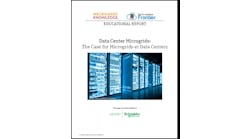Credit: David Sanderling
If public enthusiasm were money, the energy efficiency industry would be loaded with capital. From world leaders to celebrities to the common folk, everybody champions saving energy these days.
Unfortunately, public enthusiasm isn’t what attracts money; investor confidence does. And despite all of the public support for energy efficiency, investors remain wary.
It’s easy to understand their skepticism when you consider a building retrofit from an outsider’s perspective. Each project is unique, engineering is often complex, and no clear standards exist for calculating energy savings. Gauging risk becomes difficult; investors aren’t always sure what they are getting into.
“Right now we are serving up 31 flavors. Every energy efficiency project is something unique. However, investors only eat vanilla. It doesn’t matter if you put a bowl of chocolate ice cream in front of them. All they know is that it’s not vanilla. This forces them to treat every transaction as unique which significantly increases transaction costs on each investment,” said Matt Golden, senior energy finance consultant for the Environmental Defense Fund.
So how can the industry serve up vanilla, boost investor confidence, and increase deal flow?
In a recent interview, Golden explained that standardization is the key; investors want the equivalent of a business or real estate appraisal pack. “They need to be able to see on paper that a project, and associated cash flow, is based on consistent methods that will produce consistent and reliable returns.”
To achieve that end, EDF decided to bring together a range of experts to hash out protocols for commercial energy efficiency projects, as part of its Investor Confidence Project.
The result is what Golden describes as a “recipe book” to develop an investor-ready energy efficiency project. Now available and recently tested in Connecticut, the “recipe book” assembles into a framework the best practices, existing technical standards, data sets, certifications, engineering requirements, and documentation that go into a successful project.
Here is how it can be used: A project developer follows the protocols, and then an independent third party conducts a review to be sure the protocols are met. This takes the pressure off investors and turns diverse projects into something the market can understand.
“It is a standard documentation package that you can then bring directly to investors. They will know what they are looking at and can have confidence in how the data that feeds into their underwriting process was derived,” he said.
Matt Golden
Now investors have the necessary information to manage performance risk, whether those investors are energy service companies, insurance providers, or the most common investor in the commercial marketplace – the building owner.
The approach should help increase deal flow, decrease transaction costs, and improve confidence that savings are real – an essential near-term goal to attract capital and get more energy efficiency projects developed, Golden said.
But the “recipe book” may serve an even larger purpose as the energy efficiency industry evolves beyond the single-building retrofit into new business models to achieve scale. Already, several players are creating portfolios of buildings and aggregating savings to sell into capacity or capital markets. Some are creating virtual power plants.
The protocols offer investors a way to grasp the value this kind of portfolio offers in its entirety.
Golden said it’s similar to the way investors look at other asset classes such as mortgage-backed securities. “Everybody who takes out a mortgage is not exactly the same, but they conform to a set of requirements,” he said.
Similarly, if energy efficiency projects conform to a set of requirements, investors can evaluate performance at the portfolio level. They are spared doing due diligence on each building within the portfolio.
Energy efficiency turns into something that looks more like a financial product. “And with financial products or insurance products investors are betting on the curve – it is about understanding the yield for a portfolio,” he said.
Golden added: “You can’t bet on uncertainty. Long-term, this exercise is about turning uncertainty into manageable risk and unlocking access to lower cost capital.”
EDF’s Investor Confidence Project is now working on making its protocol available through a group of allies: ESCos, financial companies, engineers, software companies, organizations and others. More information on the Investor Confidence Project is here. To join as an ally or learn more, contact Golden at [email protected].







